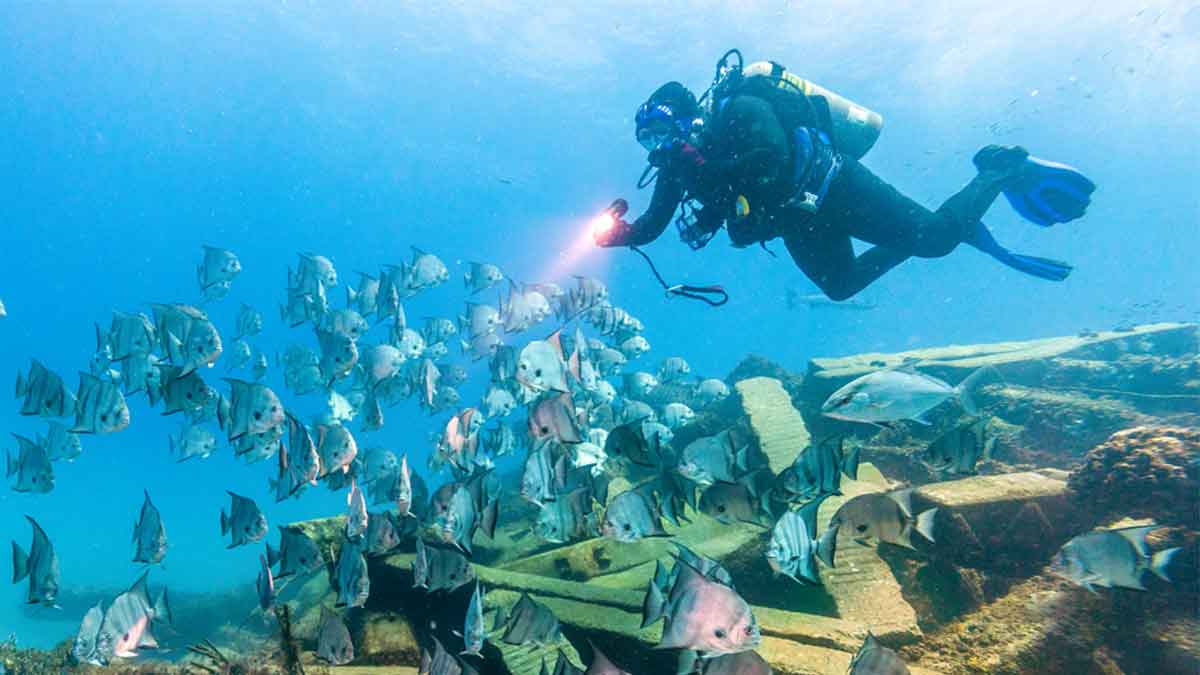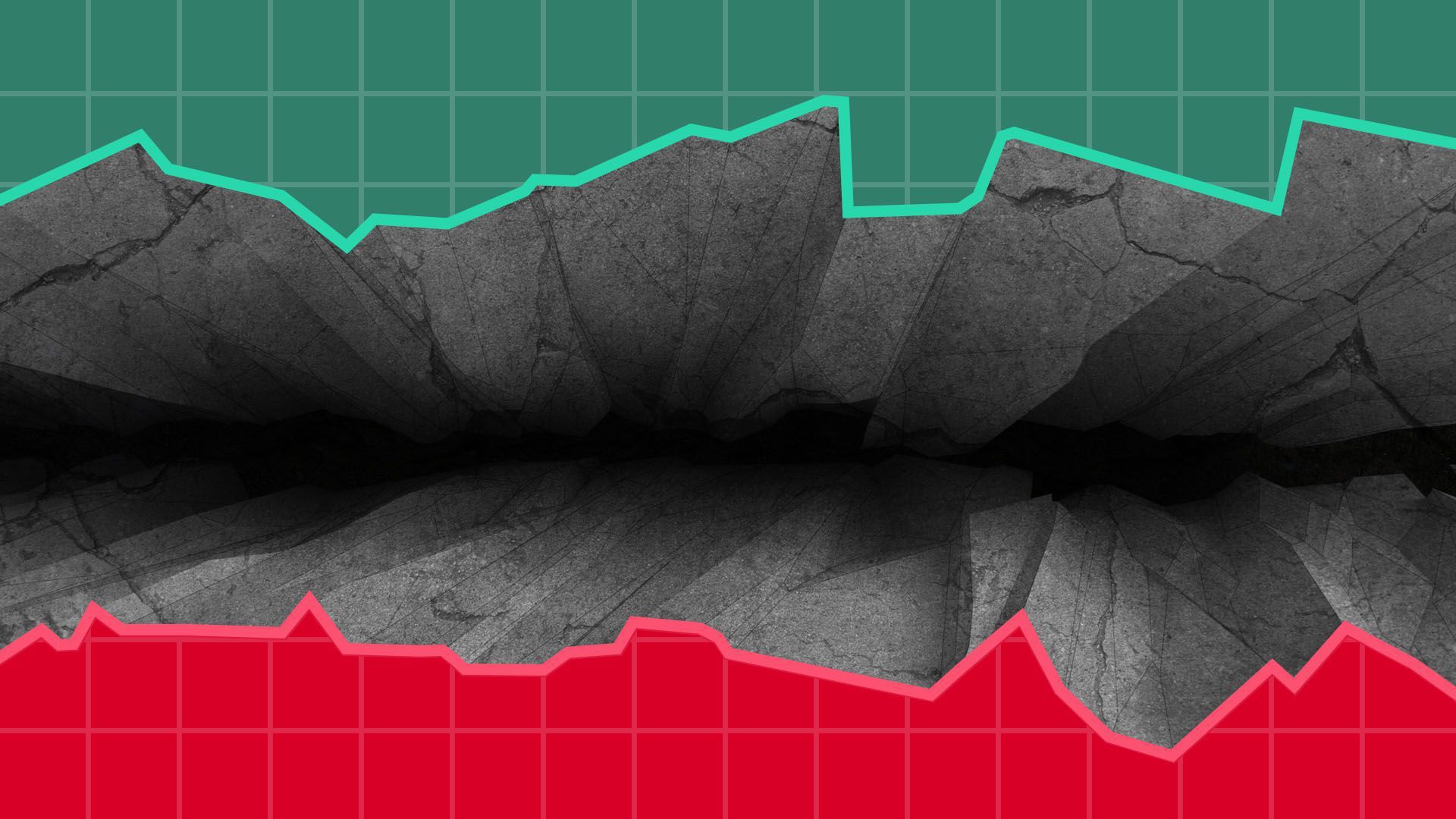| | | | | | | Presented By Enbridge | | | | Axios Generate | | By Ben Geman and Andrew Freedman · Nov 03, 2022 | | 👟We're racing toward the weekend! Beer emoji tomorrow. Today's newsletter has a Smart Brevity count of 1,191 words, 5 minutes. 📬 Did a friend send you this newsletter? Welcome, please sign up. 🎶 50 years ago the late soul legend Curtis Mayfield was #1 on Billboard's album charts with "Super Fly," which provides today's intro tune... | | | | | | 1 big thing: Corporate climate action lags pledges |  | | | Illustration: Annelise Capossela/Axios | | | | A trio of new reports offer a reality check on the high-profile growth of corporate climate pledges, Ben writes. Why it matters: Many companies are taking real steps to cut CO2, but stronger efforts are needed to keep Paris Agreement goals alive. 🗞️ Driving the news: Accenture finds that one-third of the world's largest 2,000 companies by revenue have net-zero emissions targets, a 7% boost since late 2021. - But it warns very few are on pace to reach those long-term goals, which typically have a midcentury deadline and often interim benchmarks.
- "Unless they accelerate progress, 93% of companies with net zero commitments will miss their targets."
- Accenture also notes that inflation, supply chain bottlenecks and worker shortages are barriers.
Driving the news, part 2: A Bain & Co. report also finds more companies embracing targets despite economic and supply chain headwinds. - But firms are falling short of existing goals, based on reporting to CDP (the NGO formerly known as the Carbon Disclosure Project).
- A third of companies with goals for operations and energy that powers them missed 2021 emissions targets.
Driving the news, part 3: MSCI's analysis of public companies' emissions finds them out of step with Paris targets. - "Sixteen percent of listed companies align with keeping global warming at or below 1.5°C," the investment research firm said.
- One-third of the companies it tracks align with holding temperature below 2°C, the fallback Paris goal.
- The rest is further off-pace, and looking at listed companies together, it projects 2.9°C of warming.
🔍 Zoom in: Accenture sees huge challenges mixed with good signs. The 93% of companies with long-term net zero targets would need to double the pace of emissions cuts by 2030 to get on track — and then speed up further. But they don't dismiss the overall efforts as greenwashing. Companies with targets have been cutting emissions more than ones without them. - As of June, 84% of companies planned to increase sustainability investments this year.
- The most carbon-intensive industries see the highest growth in target-setting.
Yes, but: Targets vary in transparency and breadth, with fewer companies setting "Scope 3" targets. Those are emissions throughout companies' value chain and use of their products in the economy — often the highest share of their CO2. |     | | | | | | 2. U.S. wind and solar growth is slowing — for now |  Data: American Clean Power Association; Chart: Simran Parwani/Axios The pace of wind and solar installations slowed significantly this year, even as industry officials are optimistic about the new climate law boosting long-term growth, Ben writes. Driving the news: The latest quarterly report from the American Clean Power Association finds Q3 land-based wind additions were 78% lower than the same stretch last year. Utility-scale solar additions were 23% lower, but grid-connected battery storage is still soaring, up 227%, the industry group said. Why it matters: Faster deployment is needed to meet the White House goal of 100% carbon-free power by 2035. Threat level: Inflation and supply chain problems are hitting the industry and delaying projects. - JC Sandberg, the group's interim CEO, said in a statement that "an opaque and slow-moving process at U.S. Customs and Border Protection" makes it hard to obtain solar panels.
- But the climate law solves a problem that has slowed new wind by ending uncertainty about future tax credits.
What's next: The group says the law can enable annual "clean" installations to triple by the decade's end. "It takes time for legislation like this to manifest in market trends," John Hensley, the group's VP of research and analytics, told reporters. Yes, but: Key federal work remains to breathe life into the law, including Treasury Department guidance for using tax credits, ACP officials say. |     | | | | | | 3. Here comes a $25,000 solar-powered electric SUV |  | | | The Sono Sion has solar panels embedded in its polymer body panels. Photo courtesy of Sono Motors | | | | After decades of attempts to power cars with energy from the sun, the solar automotive age might finally be upon us, Axios' Joann Muller reports. Driving the news: Germany's Sono Motors, which went public last year, may have cracked the code with a $25,000 electric SUV called the Sion that's covered pretty much bumper to bumper in solar cells. - The Sion's 456 cells are integrated seamlessly into its plastic hood, fenders, sides, roof and rear panels.
- They extend the 190-mile battery range by an average of 70 miles a week — or up to 150 miles per week in perfect conditions.
Why it matters: For people with short commutes in sunny locales, that could mean never plugging in again. Read the whole story. |     | | | | | | A message from Enbridge | | Can coral reefs help fight climate change? | | |  | | | | Enbridge's support is helping the University of Texas Rio Grande and Friends of RGV Reef determine if reefs can capture and store carbon. Why it's important: This is "a potential game-changer for the planet" in dealing with climate challenges. Read more. | | | | | | 4. ⚠️ UN sees dangerous "adaptation gap" |  | | | Illustration: Sarah Grillo/Axios | | | | A new United Nations report finds just "incremental" global progress in preparing to adapt to harms from climate change, Ben writes. Why it matters: Global warming's effects are already here and will worsen, even amid efforts to cut emissions to limit future temperature rise. The big picture: It's vital for countries to have infrastructure and response plans for more powerful storms, intense heat waves, drought that affects farming and other risks. What they found: More planning is underway, but nowhere near enough money to act on it. - Over 80% of countries now have adaptation "plans, strategies, laws and policies."
- Estimated annual adaptation needs worldwide are $160 billion to $340 billion by 2030 and $315 billion to $565 billion by 2050.
- International financing for developing countries has risen but remains a fraction of estimated needs, reaching roughly $29 billion in 2020. Argus Media has more.
👀 What we're watching: How the findings influence negotiations and commitments at this month's UN climate talks in Egypt. 😟 Speaking of gloomy findings... A separate UN report finds glaciers at some of the world's most famous World Heritage sites are set to vanish within 30 years, including those at Yosemite National Park, Axios' Rebecca Falconer reports. Read her story. |     | | | | | | 5. Undocumented farmworkers face disaster barriers |  | | | Illustration: Annelise Capossela/Axios | | | | Undocumented farmworkers in the U.S. face critical barriers to emergency health care during and after disasters, multiple organizations tell Axios' Ayurella Horn-Muller and Sabrina Moreno. The big picture: As climate change makes heat waves hotter and rapidly strengthens hurricanes across the U.S., lack of health care access is a worsening crisis for the backbone of America's agricultural workforce. Threat level: While farmworkers often live in flood plains, their labor camps don't always appear on maps, meaning emergency services can't always find them, says Melissa Castillo, of the nonprofit NC FIELD. - These areas are prone to have limited internet access and cellphone service, which can also thwart their ability to seek medical care or look up weather alerts, Castillo tells Axios — which left "scores" of farmworkers in North Carolina stranded in waist-high water levels during Hurricane Florence.
Of note: Even if hospitals or clinics are nearby, farmworkers without authorization tend to avoid them during and after disasters because of deportation fears, according to Amy Liebman, director of environmental and occupational health at the Migrant Clinicians Network. The bottom line: The UN estimates an annual average of 21.5 million people are displaced by weather-related sudden-onset hazards. Because of that, undocumented migration into the U.S. is expected to rise and become more perilous, according to a 2021 report published in the journal Science. Read the whole story. |     | | | | | | 6. 🛢️Quoted | | "Oil companies could drill more, but they do not want to because their shareholders have pushed them to invest less and instead pay more dividends and share buybacks — and their shares in many cases are at all-time highs." — Raymond James oil analyst Pavel Molchanov, via the Financial Times |     | | | | | | A message from Enbridge | | Our focus is on tomorrow | | |  | | | | At Enbridge, we're advancing the energy transition by investing in low-carbon solutions and modernizing our systems. The goal: By 2030, we plan to reduce the intensity of greenhouse gas emissions from our operations by 35%. By 2050, we plan to achieve net zero emissions. Find out more. | | | | 🙏Thanks to Mickey Meece and David Nather for edits to today's newsletter. We'll see you back here tomorrow! |  | | Why stop here? Let's go Pro. | | | | | | Axios thanks our partners for supporting our newsletters. If you're interested in advertising, learn more here.
Sponsorship has no influence on editorial content. Axios, 3100 Clarendon Blvd, Arlington VA 22201 | | | You received this email because you signed up for newsletters from Axios.
Change your preferences or unsubscribe here. | | | Was this email forwarded to you?
Sign up now to get Axios in your inbox. | | | | Follow Axios on social media:    | | | | | |










No comments:
Post a Comment